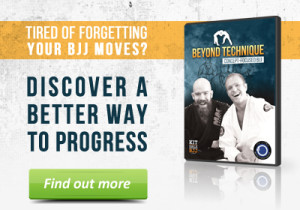In Brazilian Jiu-jitsu, there is no one true path to mastery. You don’t have to have a certain body type. You don’t have to be young. You don’t have to be athletic. You can start at any level and travel as far as you desire. That’s why it’s such a beautiful art.
The issue lies in conveying that it is an art. Technique doesn’t work exactly the same for everyone. We all have different attributes, and some of us even have handicaps.Those differences must be acknowledged, but they are not obstacles to growth.
The obstacle lies in focusing solely on technical instruction.
Consider this. If I wanted to teach you how to paint, would the best method be to show you stroke by stroke how to replicate one of my paintings? Yes, in time, you may intuitively piecing together the underlying concepts through diligent practice, but is it the best method?
Add on to that the fact that many aspiring painters will fail to replicate even the most basic work over and over again. That’s not because they don’t have the potential to be great. They just haven’t done anything quite like painting before, and there is a wall that must be smashed before the world of possibilities becomes visible.
What If the Focus Changed
There are common elements that bind all technique together. I call them building blocks. One of the best examples is the shrimp. It is just one movement, but learning that one movement can give you a head start on learning and creating countless techniques.
Another example is the mechanics of a blood choke. When you understand that cutting off blood flow to the brain by blocking the carotid arteries is all that a choke requires, you can apply that concept in many ways. It is the foundation of learning, improving, and creating technical chokes.
Concepts and movements are the building blocks of technique.
Often, those building blocks are not focused on. Instead, we focus on the end result. In the grand scheme of things, that means that one piece of the puzzle is focused on instead of the glue that binds many pieces together.
What if the focus changed though?
What if a building block was singled out and focused on with technique being taught only to demonstrate relevance? How would that affect learning in the long time? Just imagine if you had been given a sense of how the grand puzzle pieces together at an earlier stage in your development. How could it have sped up your progress?
Actually don’t answer that. Instead experiment by doing the following:
- Take every new technique you learn and break it down into its core concepts and movements.
- Make a list of the concepts or movements that you see in more than one technique.
- Link the positions that you want to become better at with the concepts and movements that apply to them.
- Focus on mastering the movements and understanding the concepts that have the most applications to the style you want to create.
Experiments
On the teaching side of the equation, I put this idea into practice at Crazy 88. I taught classes Monday and Wednesday that both focused on the mechanics of chokes. The goal was to introduce and reinforce the concept, while also highlighting the possibility of troubleshooting your own technique.
Every technique shown was geared towards that purpose. For example, I taught the anaconda choke. It’s an arm triangle variation, and that means that one side of the neck has to be cut off with your opponent’s own arm. It’s one reason that those chokes can be difficult to get right. All explanation and troubleshooting was done from the conceptual angle. So the idea was just constantly reinforced.
In the end, I was confident that even if they took nothing else away from the class, they had that concept. In fact, it cemented it in my own mind as well. Since then, I’ve just been seeing chokes all over the place.
Issues and Opportunities
It is easy to teach how you were taught. The same can’t be said about reducing technique to bits and pieces and demonstrating how it can be put back together.
Take the shrimp for example. It has wide applications in Brazilian Jiu-jitsu, but can you think of twenty techniques that use it as a core movement right now? I couldn’t. I know they exist, but I’ve never taken the time to focus and identify it when I use it.
Many movements and concepts are like that. They are extremely relevant to the development of skill but they receive only a basic level of focus. The challenge in changing that lies in analyzing all the technique you know to identify the building blocks.
It will be a daunting project, but just imagine how much you will improve as a result. The video below will help you as well because it reinforces the significance of conceptual focus.
Since this article was written, there has emerged a new instructional that focuses on conceptual instruction. I have it, I like it, and I recommend it. Beyond Technique will help you accelerate the rate of your growth, and I hope that this style of instruction becomes a new trend in our art.


